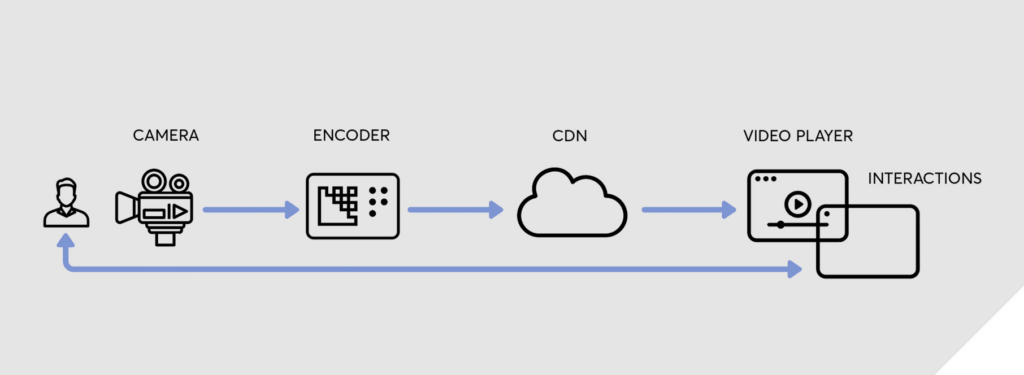
Have you ever wondered about the journey of a video, from the moment it’s recorded to when it appears on your screen? The process might seem like magic, but it’s actually a fascinating interplay of technology and innovation. Let’s take a closer look at how video works.
- Capture: It all begins with capturing the visuals and audio. Whether it’s a Hollywood blockbuster or a homemade vlog, cameras and microphones record the action and sound, transforming real-life moments into digital data.
- Encoding: Once recorded, the raw data undergoes encoding, where it’s converted into a digital format. This process compresses the data, making it easier to store and transmit over the internet.
- Storage and Transmission: The encoded video is then stored on servers, ready to be streamed to viewers. When you hit play, your device requests the video from these servers, and it begins its journey across the internet to reach you.
- Streaming Protocols: Video streaming relies on specialized protocols, such as HTTP Live Streaming (HLS) or Dynamic Adaptive Streaming over HTTP (DASH). These protocols break the video into smaller chunks, allowing for smooth and efficient delivery over the internet.
- Adaptive Bitrate Streaming: A crucial innovation in video delivery is adaptive bitrate streaming. This technology adjusts the quality of the video in real-time based on factors like internet speed and device capabilities. It ensures a seamless viewing experience, even with varying network conditions.
- Decoding and Display: Once the video reaches your device, it’s decoded and displayed on your screen. Your device’s video player handles this process, rendering the frames and synchronizing them with the audio track.
- User Interaction: While watching a video, you can interact with playback controls like play, pause, and seek. These commands are sent back to the streaming server, which adjusts the delivery of the video accordingly.
- Behind the Scenes: Behind the scenes, a complex network of servers, content delivery networks (CDNs), and internet infrastructure ensures the smooth delivery of videos to viewers around the world. CDNs cache copies of popular videos closer to viewers, reducing latency and buffering.
- Quality Control: Quality control mechanisms monitor video playback in real-time, detecting issues like buffering or playback errors. These systems adjust the streaming parameters to maintain a high-quality viewing experience.
- Future Innovations: The future of video is bright, with advancements like virtual reality and 8K resolution pushing the boundaries of what’s possible. As technology continues to evolve, so too will our ways of experiencing and sharing video content.
In conclusion, the journey of a video from creation to consumption is a remarkable feat of technology and engineering. By understanding the intricacies of how video works, we can better appreciate the magic of streaming our favorite content anytime, anywhere. So, the next time you watch a video online, take a moment to marvel at the incredible journey it undertakes to reach your screen.



